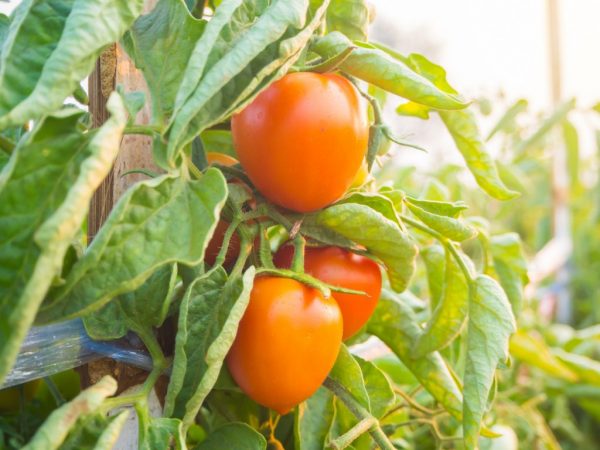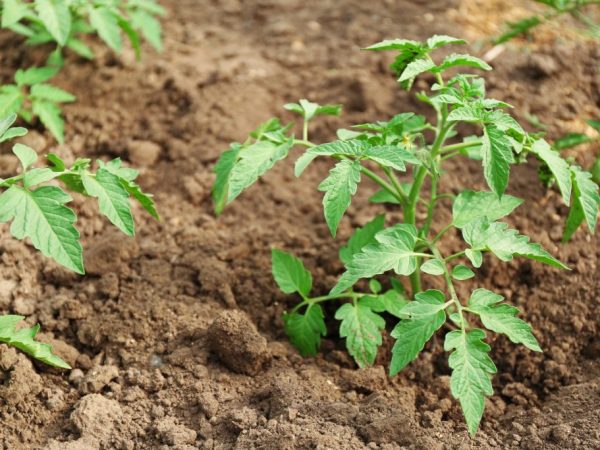Characteristics of the tomato variety Goose Egg
Tomato Goose Egg (can also be found in the name of the Siberian Garden series) is an excellent large-fruited variety for universal use. One of the leaders in the seed market among its kind. Well suited for recycling, but the ripe fruit will satisfy the taster's sophisticated taste. On the garden bed, the bush looks beautiful: rich green leaves, an interestingly shaped fleshy sweet tomato, excellent height of the bush, elegant clusters. It will delight any gardener who only speak positively about the variety with good yield.

Characteristics of the tomato variety Goose Egg
Characteristic
Tomato variety Goose Egg belongs to Siberian selection. This is an indeterminate variety - tall, which is one of the leaders in terms of high yield, among other species. The main characteristic of a tomato is its ability to grow indefinitely, which can only be stopped by pinching the top of the bush in time. The description of the Goose Egg variety will give a good characteristic for growing:
- In terms of ripening, this tomato is a mid-season carp variety, the ripening rate is about 111-115 days.
- It grows well and gives a yield, both in the open field and in greenhouses.
- Bushes are tall, can grow up to 1.8 m in open soil, and some grow up to 2 m in greenhouses.
- The brush on the bush is complex, each with up to 8 oval oval-shaped tomatoes (in fact, whence the name of the variety - Goose Egg).
- The fruits are bright red, firm, not watery, with only one flesh. The stalk has no spots, the tomato is evenly covered with one color. The fruits taste sweet and juicy - they are excellent fresh, they will complement the taste of any salad, can be well preserved and processed.
- There are few seeds in the fruit.
- A slight over-ripening of the fruit will only improve the taste. But the tomato won't last that long.
- The peel is firm and knocked down, but soft when preserved and consumed. If desired, the skin can be easily separated from the fruit.
- The weight of one tomato is about 300 grams, thus, on average, the yield per 1 sq. m up to 7 kg.
- Ripen well with early harvest. What determines its practicality for growing for commercial purposes.
- Tomatoes on the table keep their shape perfectly, do not spread out in a puddle, do not get squeezed when slicing.
- Good keeping quality - the shelf life of fruits is up to 45 days.
- Due to the elastic pulp, it does not lose its presentation during transportation.
Excellent result in terms of yield, fruit and characteristics of the bush. It grows better in a greenhouse, where due to a warmer temperature, nightshade produces a larger fruit.
Growing seedlings

The plant needs pinching and pinching
Seeds begin to germinate in February-March, and for good seedling growth, do not forget about feeding the soil with any suitable means.
The temperature of the soil with seeds should be maintained at 20-25 ° C. The recommendation for planting the Gusinoe Yaytso variety is three bushes per 1 sq. M.
The bush grows strongly up and to the side, thus forming new shoots with stems and brushes.Therefore, care and attention for the seedlings is needed so that the bushes have enough strength and time for a timely harvest.
The optimal plant care instructions for the Goose Egg will be:
- When planting in a greenhouse, it is worth immediately pinching the bush, leaving up to 2 shoots on the stem (pinching is the removal of lateral shoots in the early stages of growth). Carry out grazing as the bush grows. When breaking off a shoot, leave 2 cm of hemp so that the shoot will not grow back.
- Leave 4-5 brushes on the stem.
- Pinch the top so that the bush does not grow any more. Thus, all the strength of the variety will go to yield, and not to the size of the bush.
- Mandatory garter to the support. One bush, because of its maximum size and future fruits, is best tied to two supports. The best for this is vertical trellises, with a stretched wire on top, and from which strong ropes are pulled down.
- Separate garter of hands with fruits.
- Systematically remove old lower leaves up to the fruiting cluster.
The variety does not need special fertilizers. Watering should be done a couple of times a week, and be sure to make sure that the water does not erode the soil in the root area, because the variety has a well-developed main and adventitious roots that grow from the stem. The tomato will survive a slight drought, and this will not affect its harvest.
Diseases
Goose Egg, bred in Siberian conditions, therefore, in general, it is quite resistant to many types of diseases (for example, late blight) common among other tomatoes. But in order to avoid the defeat of infections, it is better to apply some measures in the prevention of diseases:
- Before planting in a greenhouse or soil, remove the top layer of the earth - disinfect the earth from possible fungal spores.
- Tomatoes need to be treated with preparations containing copper or sulfur.
- Seedlings and bush can be treated with fungicides and garlic solution. Such treatment is carried out three times - 20 days after planting in the ground, the second time - after 40 days of planting, and during the flowering period of the brushes.
Whatever the resistance of the variety to diseases and infections, by doing all these simple manipulations, you can protect your site and crop from infection.
Conclusion
The first thing that is unique about this Siberian nightshade is its high yield.
The Goose Egg Tomato is quite simple and easy to manage in growing, it will not cause many problems and worries for gardeners.
Siberian breeders took care of the taste of the fruit, as well as the tomato in a rather original size and shape. A versatile tomato, applicable in any form. The only drawback may be in the salting - the size of the tomato is quite large oval in shape, which simply may not fit into the opening of the jar.


